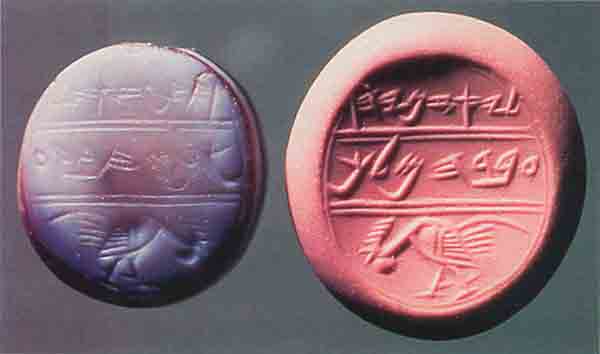Image Details

André Lemaire/Israel Antiquities Authority
“Yaazenyahu servant of the king” is inscribed on this seventh-century B.C.E. seal, at left, from Tell en-Nasdbeh. Seals are inscribed in mirror image, so they can be read properly when stamped on a bulla—a document sealer made of wet clay, molten lead or some other quick-drying material. A modern impression of the seal, with its correct-reading inscription, is at right. Although several eighth-century B.C.E. seals and seal impressions with the names of Israelite kings have surfaced, there are no seventh-century seals or impressions carrying the names of kings. Why? Because, André Lemaire suggests, it was the custom in the seventh century B.C.E. to identify the owners of seals by their titles alone: Thus Yaazenyahu is identified only as ‘BD HMLK, “servant of the king”—indicating only that he was a high-ranking official at some as yet unidentified court.
